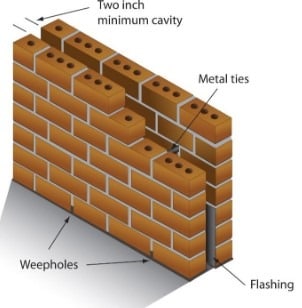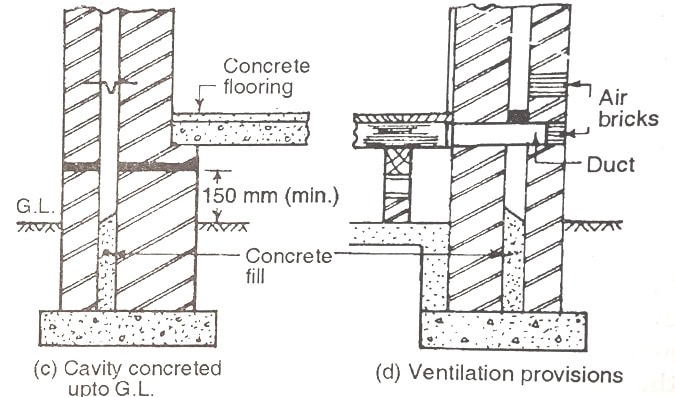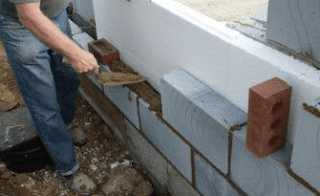What is a Cavity Wall? Construction and Advantages of Cavity Walls
What is a Cavity Wall?
Cavity wall is constructed with two separate walls for single wall purpose with some space or cavity between them. These two separate walls are called as leaves of cavity wall. The inner wall is called as internal leaf and outer wall is called as external leaf. Cavity wall is also called as Hollow wall.

For non-load bearing cavity wall, two leaves are of equal thickness or sometimes internal leaf with more thickness is provided. The cavity size should be in between 4 to 10cm. The internal and external leaves should have at least 10 mm thickness. The two leaves are interconnected by metal ties or links as shown in above figure.
Construction of Cavity Walls
In general, cavity wall doesn’t require any footings under it, just a strong concrete base is provided on which cavity wall is constructed centrally. Two leaves are constructed like normal masonry, but minimum cavity must be provided in between them. The cavity may be filled with lean concrete with some slope at top up to few centimeters above ground level as shown below.

Weep holes are provided for outer leaf at bottom with an interval of 1 m. Normal bricks are used for inner leaf and facing bricks are used for outer leaf. Different masonry is also used for cavity wall leaves. The leaves are connected by metal ties or wall ties, which are generally made of steel and are rust proof.
The maximum horizontal spacing of wall ties is 900mm and maximum vertical spacing is 450mm. The wall ties are provided in such a way that they do not carry any moisture from outer leaf to inner leaf. Different shapes of wall ties are shown in below figure.
For half brick thickness leaves, stretcher bond is provided. And for one brick thickness or more thickness, English bond or Flemish bonds type constructions are provided. While laying bricks, care should be taken without filling the cavity with cement mortar.
To prevent mortar dropping in cavity, wooden battens are provided in the cavity with suitable dimensions. These battens are supported on wall ties and whenever the height of next wall tie location is reached, then the battens are removed using wires or ropes and wall ties are provided.
Two leaves should be constructed simultaneously. Spacing should be uniform and it is attained by predetermining the location of wall ties. Damp proof course is provided for two leaves separately. In case of doors and windows, weep holes are provided above the damp proof course.
Advantages of Cavity Walls
Following are the advantages of cavity wall when compared to solid walls.
- Cavity walls give better thermal insulation than solid walls. It is because of the space provided between two leaves of cavity walls is full of air and reduces heat transmission into the building from outside.
- Economically they are cheaper than solid walls.
- Moisture content in outer atmosphere is does not allowed to enter because of hollow space between leaves. So, they also prevent dampness.
- They also act as good sound insulators.
- They also reduce the weights on foundation because of their lesser thickness.
- Outer Efflorescence is also prevented.


No comments:
Post a Comment